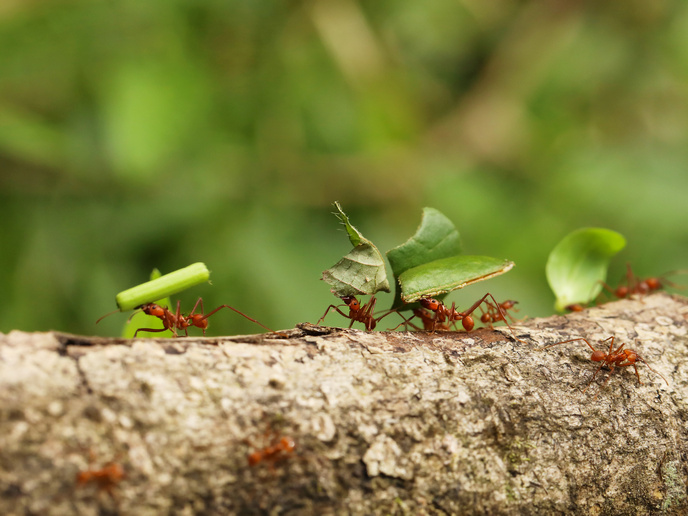Investigating the remarkable fungus farming of ants
Leafcutter ants offer fascinating parallels with human farmers. While humans have domesticated crops for thousands of years, these ants have been harvesting vegetation to grow fungal crops for millions. Human farming is increasingly endangered by the rapidly changing global climate. Yet leafcutter ants have successfully cultivated fungal crops from Texas to Argentina through extremely variable conditions of rainfall and temperature. “Fascinatingly, their farming systems have persisted across millions of years in diverse habitats, which implies that they have attained resilience to climate change. My research tries to explore the mechanisms enabling this resilience,” says Jonathan Shik(opens in new window), associate professor in the Department of Biology at the University of Copenhagen(opens in new window) and ELEVATE project coordinator. In the ELEVATE project, which was funded by the European Research Council(opens in new window), Shik and his team researched leafcutter ants to try to shed light on their farming processes, and the general evolutionary principles that govern crop domestication. “This research aimed to understand the co-evolutionary dynamics that enabled ants to evolve sophisticated farming systems with a fungal symbiont,” Shik explains.
Investigating ant farming in the rainforest and lab
Like any successful farmer, leafcutter ants must fertilise their crop with the specific blends of nutrients they need to thrive. Human farmers use inorganic fertilisers, while leafcutter ants forage for fresh vegetation fragments that they convert into a nutritional mulch and plant in their fungus garden. “How do these ants ‘know’ what specific nutrients their fungus crop needs? What are the specific nutritional needs of the fungus crop?” asks Shik. To find out, the ELEVATE team studied free-ranging leafcutter ant foragers in a tropical Panamanian rainforest. The researchers took leaf fragments from the jaws of the ants and then analysed them for nutritional content in order to determine which nutrients the ants use to ‘fertilise’ their fungus crop. Another part of the project involved isolating fungus from the colonies of these ants and growing it on Petri dishes. This let them find the conditions under which the fungus grows best. The researchers then combined data from the rainforest and the Petri dish experiments, to test whether the nutrients foraged by ants target the ‘optimal’ nutritional growth requirements of the fungal cultivar.
Shedding light on agricultural parallels
One major finding from the ELEVATE project was the discovery of evolutionary trade-offs with crop domestication in fungus-farming ants that parallels trade-offs seen in human agricultural systems. The team found that as the fungal crops became more specialised over time, they started providing higher-quality nutritional rewards, but also became less resilient to a drop in nutrients. This made them more dependent on their farmers. The researchers also uncovered the molecular and cellular mechanisms behind the fungal crop and how it produces nutritional rewards for the ants. “We showed that the fungal cultivar altruistically recycles its own cellular components – through a process called autophagy – into nutritional metabolites used to provision its ant farmers.”
Key principles behind crop domestication
Shik adds the research may not be able to directly help human farming systems, but it has revealed some of the core evolutionary principles governing crop domestication. “It doesn’t take human-level cognition, culture or technological innovation for this to happen,” he says.







